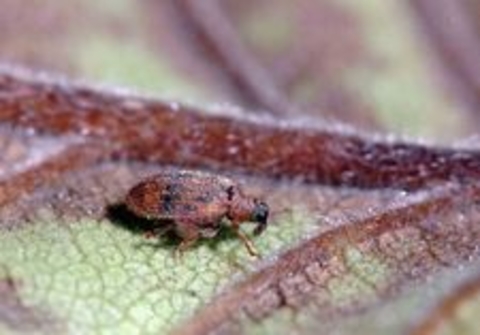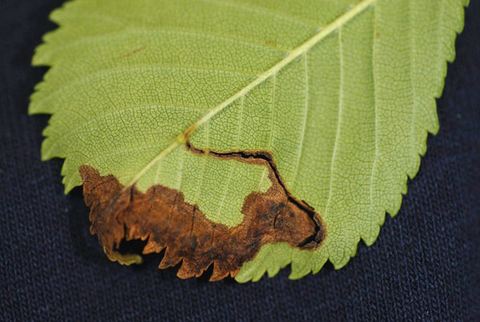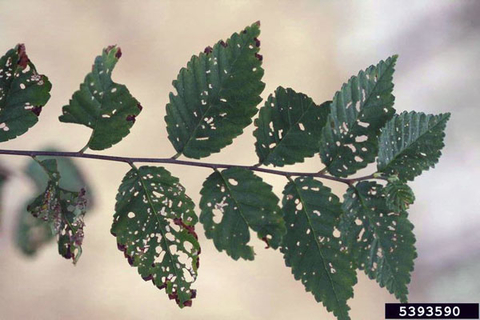Quick facts
- The European elm flea weevil (Orchestes alni) is an invasive insect, common throughout Europe and first found in the U.S. in 1982.
- This weevil feeds on Siberian elm, Chinese elm and hybrids with Asian parentage.
- It rarely feeds on American elm.
- The feeding damage only affects the appearance of the tree.
How to identify them
The adult elm flea weevil is small, 1/10 - 1/8 inch long.
It is reddish brown with black spots or dark brown to black, with a long snout and large back legs which allow it to jump.
Life cycle
European elm flea weevils live through the winter as adults and in the spring, move to the elm tree. Soon after, the adults lay eggs along the edges of the veins.
When the larvae hatch, they feed as leafminers inside the leaves. They move to the tip of the leaves where they create blotch mines.
The larvae feed for a few weeks and then transform into pupae.
Adults emerge later in the summer and feed until fall.
Damage caused by elm flea weevil
European elm flea weevil does not cause serious damage to elm.
In case of heavy feeding on recent transplants or stressed trees, severe defoliation can occur. This might weaken the elm and make it an easy target for other problems.
- The weevil feeds on the underside of leaves.
- A thin, opaque layer of leaf tissue remains.
- Eventually, this chewed area dries up and falls out.
The damage might look similar to injury caused by elm leaf beetle. Elm leaf beetle feeding creates small oval holes in the leaves with the edge of the holes still green.
How to protect your trees from elm flea weevil
Treatment for european elm flea weevil is unnecessary.
If treatment is desired, apply a systemic pesticide like imidacloprid in early spring to control this weevil.
CAUTION: Mention of a pesticide or use of a pesticide label is for educational purposes only. Always follow the pesticide label directions attached to the pesticide container you are using. Remember, the label is the law.
Reviewed in 2018





